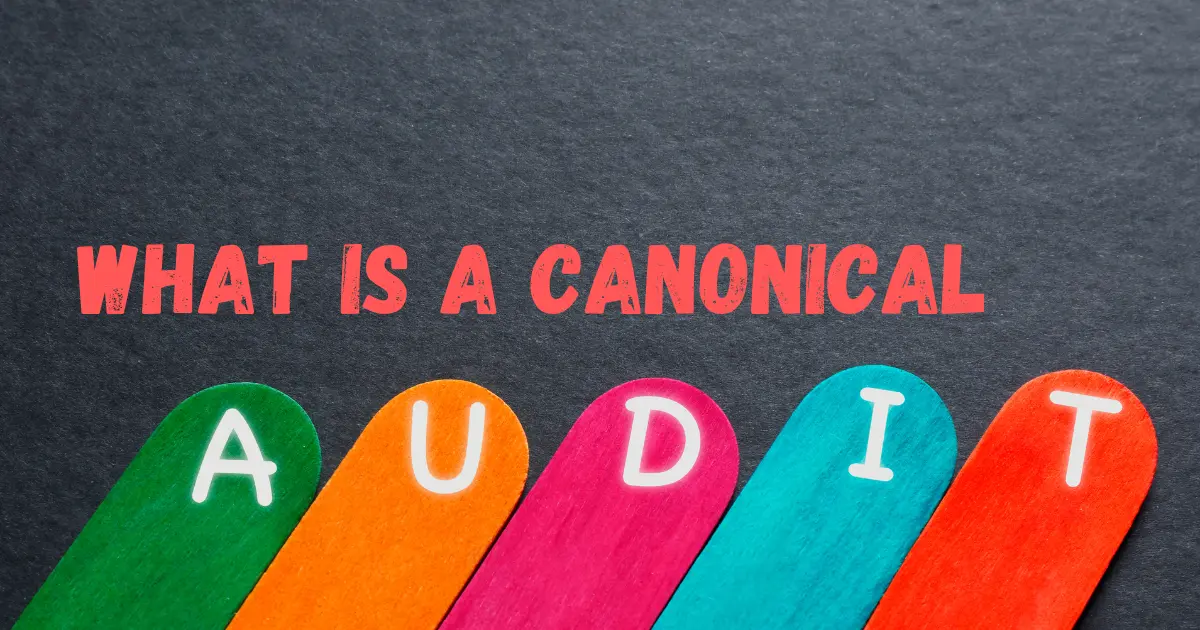Table of Contents
ToggleWhat Is a Canonical Audit?

A canonical audit might sound like fancy tech magic. It is just the arrangement of your website content, so the search engines are not perplexed. Suppose you are organizing your closet and have duplicates of dresses. You choose which ones to keep front and center. It is the perfect example of a canonical audit.
You might remove similar or even duplicate pages when you run a website. For example, suppose you have a blog post titled 6 Easy Recipes, and the same content is available under two different URLs.
It is the same page, but to Google, it is like, Wait, are these two different pages? Which one should I rank? This mess can damage your website performance because Google does not know where to send your users.
That is where a canonical audit is needed. It is a method to recognize these same or near-duplicate pages and tell search engines that this page is the MVP. You do this with a canonical tag, a small snippet of code that leads search engines to the main authoritative version of a page. In short, it is like a traffic sign for Google, ensuring all the adoration and ranking points go to the right page.
Moreover, the concept behind a canonical audit is uncomplicated: it is about optimizing your site, so it is easy for search engines to comprehend and rank the correct pages. And the soundest thing? Once you get the hang of it, it is not as complex as it states!
Why Does Canonical Audit Even Matter?
Let us gab about what a canonical audit is but in the easiest, most down-to-earth way. Presume your website is like a wardrobe. Every page is like a dress. Now, what happens if you have a lot of similar outfits? Like, you have many pink shirts that look the same. If someone asks you which one is your favorite? you would be like, Uh… I do not know because they are all the same! That is how search engines like Google feel when your site has multiple pages with similar content.
Additionally, Google ranks your pages and displays the most satisfactory ones to somebody searching online. But if it sees two (or more) pages that look the same, it does not know which one to select. It might end up missing both or splitting the ranking tenderness between them. And suppose what? That is alarming news for your SEO. You do not like Google confused—you want it focused on the right page.
This is where the canonical audit comes in. It is like doing a deep clean of your site. You go through all your pages, discover those copies or lookalikes, and hit a canonical tag on the one you like Google to see.
In short, a canonical audit optimizes your site and ensures your best pages get all the attention they deserve.

Google is like that super-organized buddy who requires everything to make sense. If your website has identical or similar content, it is like giving Google mixed signals. In addition, instead of focusing on one page, it distributes its attention across numerous similar pages. And truthfully? That is just harmful for business.
Moreover, consider it this way: suppose you have a tasty cake (because who does not like cake?). Now, instead of doing one big, lovely piece to someone, you chop it into tiny bits and give them random crumbs. Not very satisfying, right? That is what occurs to your website ranking possibility if Google does not understand which page to prioritize. Your ranking power gets divided, and none of the page’s finish serving as well as they could.
Furthermore, a canonical audit rectifies this issue by ensuring all the ranking power flows to one page—the one you enjoy people discovering. It is like telling Google, hey, do not waste time on the other crumbs. This is the piece you need to concentrate on.
Plus, it increases your visibility, strengthens your SEO game, and ensures your best content gets the limelight it deserves.
So, a canonical audit is like taking charge of your website. It is about keeping things transparent and ensuring Google knows which page to hype up. And trust me, when Google is happy, it is your win!
How to perform a Canonical Audit?
It is easy to perform a Canonical audit. It does take a small effort. Think of it like bound cleaning for your website.

Here is a step-by-step direction to get the job done:
Start with a Duplicate Hunt
First, use a tool like Screaming Frog, Arefs, or SEMrush. These implements check your website and show you identical pages. It is like using a magnifying glass to see those furtive duplicates that could be disordering with your SEO.
Check the Canonical Tags
Second, you have found those identical pages. It is time to organize them. Examine the canonical tags on each page (if they even have one). This tag is like a big arrow pointing search engines to the main page’s desire to be ranked. If you have two pages alike, you will choose one as the main page and ensure the tag points to it.
Fix What is Broken
Third, Uncover some pages without tags. Or alarming, tags pointing to the wrong place? Do not worry, appoint them! Add the accurate canonical tag to the right page. It is like giving precise instructions to Google so it understands where to look.
Check Your Work
Last but not least, test everything. Grasp Google Search Console to check if your canonical tags are doing their task. If Google is indexing the correct pages and ignoring the unnecessary ones, you are ready to proceed!
Conclusion
A canonical audit might ring fancy, but it is just a savvy way to rank your website. Consider it occupying your online space, so search engines know exactly what is crucial. Additionally, you assist Google and give your visitors the best possible experience when you keep your content neat and clear.
So, next time someone asks about a canonical audit, you can confidently define it—and maybe even help them clean their SEO game!

